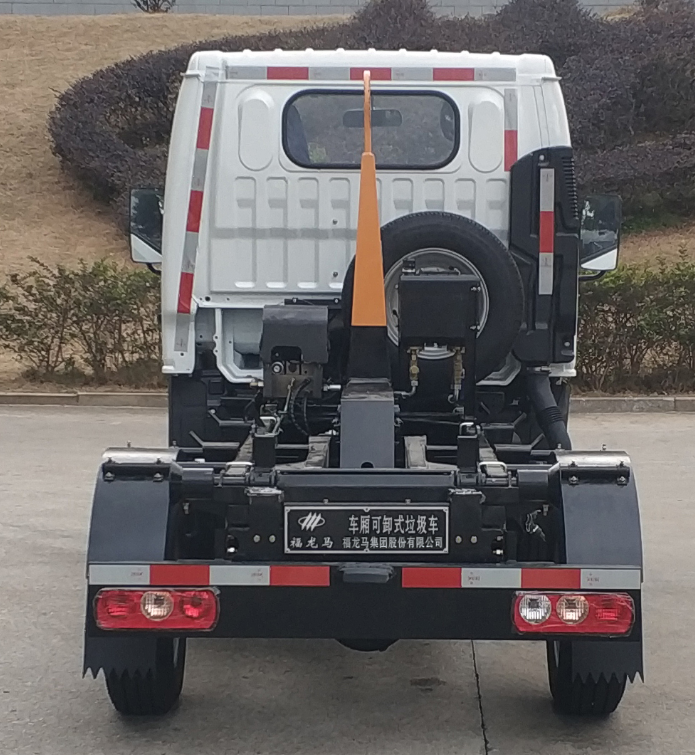Modern garbage container trucks have come a long way from their sole purpose of collecting trash. Today, they are designed to serve multiple roles that go beyond waste collection and disposal. These versatile vehicles are equipped with advanced technologies that enable them to manage recycling, street cleaning, public health maintenance, and even contribute to environmental sustainability. This article delves into the various functions of modern garbage container trucks, showcasing their importance in urban management.
History and Evolution of Garbage Container Trucks
The journey of garbage container trucks began in the early 20th century with simple horse-drawn carts used to collect waste. As cities grew, the need for more efficient waste management systems became apparent. The introduction of motorized trucks in the 1920s marked the beginning of a new era. These early trucks were basic, often just flatbeds with manual labor used to load and unload waste.
The post-World War II era saw significant advancements in garbage truck technology. Compactor trucks were introduced, which could compress waste to maximize storage capacity, reducing the number of trips needed to dispose of trash. In the following decades, innovations like hydraulic lifts, automated arms, and rear-loading mechanisms made garbage collection more efficient and less labor-intensive.

Primary Role: Waste Collection and Disposal
At the heart of every garbage container truck’s design is its primary role—waste collection and disposal. Modern trucks are equipped with sophisticated compaction systems that allow them to handle large volumes of waste. These trucks come with automated arms that can lift and empty bins without the need for manual intervention, enhancing efficiency and safety.
The collected waste is transported to various disposal sites, including landfills, incineration plants, and recycling centers. The compaction systems in these trucks ensure that waste is packed tightly, maximizing the amount that can be transported in a single trip, thus reducing fuel consumption and emissions.
Street Cleaning and Maintenance
Beyond waste collection, many modern garbage container trucks are designed to assist with street cleaning and maintenance. Some trucks are equipped with street-sweeping mechanisms that can clean roads, remove debris, and ensure a tidy urban environment. During winter, these trucks can be fitted with snowplows and gritting mechanisms to keep roads clear and safe.
This multi-functionality is crucial for maintaining urban hygiene and safety, especially in densely populated areas where cleanliness is a constant challenge. By combining waste collection and street cleaning, these trucks optimize resource use and reduce the need for multiple specialized vehicles.

Technological Innovations
The integration of advanced technologies has revolutionized the capabilities of modern garbage container trucks. These innovations include:
- Smart Sensors and IoT: Equipped with sensors and Internet of Things (IoT) technology, modern garbage trucks can monitor fill levels of bins, optimize collection routes, and provide real-time data on waste management operations. This not only increases efficiency but also helps in planning and reducing operational costs.
- GPS and Route Optimization: GPS systems and route optimization software allow garbage trucks to plan the most efficient routes, minimizing travel time and fuel consumption. This is especially beneficial in large urban areas where traffic congestion can be a significant issue.
- Autonomous Trucks: Emerging technology in autonomous vehicles is also making its way into the waste management sector. Self-driving garbage trucks are being tested, promising to further reduce labor costs and increase efficiency.
- Eco-friendly Engines: With a growing emphasis on sustainability, many garbage container trucks are now equipped with hybrid or fully electric engines. These eco-friendly engines reduce greenhouse gas emissions and contribute to cleaner air in urban environments.
Future of Garbage Container Trucks
The future of garbage container trucks is bright, with continuous advancements in technology and a growing emphasis on sustainability. We can expect to see:
- Enhanced Automation: The trend towards automation will continue, with more sophisticated autonomous trucks becoming a common sight. This will not only increase efficiency but also address labor shortages in the waste management sector.
- Greater Integration with Smart Cities: As cities become smarter, garbage trucks will play a crucial role in integrated urban management systems. They will communicate with smart bins, traffic management systems, and environmental monitoring networks to create a seamless and efficient waste management process.
- Sustainability Focus: The push for sustainability will drive innovations in eco-friendly truck designs. This includes the use of renewable energy sources, advanced recycling capabilities, and further reduction of emissions.
- Multi-functional Designs: The trend of multi-functional trucks will continue to evolve. Future designs will likely include more versatile features, allowing a single vehicle to perform multiple urban management tasks efficiently.
Conclusion
Modern garbage container trucks are much more than just waste collectors. They are sophisticated, multi-functional machines that play a vital role in maintaining urban cleanliness, public health, and environmental sustainability. From their historical evolution to the latest technological innovations, these trucks have transformed into indispensable tools for urban management.
As we look to the future, the potential for further advancements in garbage truck technology is immense. With a focus on automation, sustainability, and smart city integration, these vehicles will continue to evolve, making our cities cleaner, safer, and more efficient. The multi-functional roles of modern garbage container trucks underscore their importance in our daily lives, highlighting the need for continued innovation and support in this essential industry.







